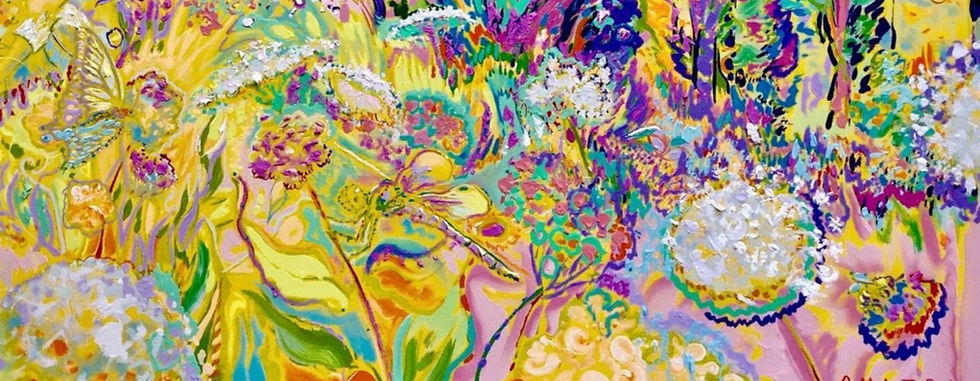My Dancing Brush Strokes
- Dmitri Wright
- May 10
- 3 min read
The painting process is musical. Your brush is the bow and the canvas the violin, your heart knows the score.
Brushstrokes are an artistic shorthand; it is one’s artistic creative code - one’s DNA. For an Impressionist, brushstrokes are for capturing expressive and representational impressions of light on the subject.
Impressionist brush vocabulary varies from artist to artist. Each artist has their own kind of brush characteristics. One can have five or as many as ten different types of brushstrokes, for your brushstrokes are your brand.
You need to practice different types of brushstrokes to find which ones are a fit for your style.
Create your own list of Signature Brushstrokes.
Movement
To strengthen your signature brushstrokes, paint often. Come to appreciate your own natural range of motion. From your trunk, shoulder, arm, wrist, palm and fingers move playfully. Do not separate the dancer from the dance nor moment from sensation.
Learn to accept what you physically have, build from your intrinsic and instinctive strengths, exercise weaker areas until they are stronger. Let this process of improving your own signature brushstrokes develop - like a child, or a plant growing towards the light, nothing forced.
Improvisational brushstrokes should be as important as illustrating the subject. Exercise your interest between science and poetry, realism and expressionism and watch the magic happen.
Brushstrokes Terms
Linear brushstrokes – are most often used as the foundational design and composition for paintings. They’re also used as illustrative and expressionistic character, which form the body of Impressionist paintings. These long thin strokes are as if drawing. They delineate the space and shapes. And are excellent for movement and rhythm.
Directional brushstrokes – relate to the way brushstrokes point and move in a particular course. One reason why Impressionist paintings shimmer is because light reflects off from the surface from a variety of directions, thereby causing an effect on the colors that is dazzling. They are to be used in clusters and multidirectional throughout a work. The stroke directions are Round, Straight, Angled, Curved, Horizontal, and Vertical.
Broken-spaced brushstrokes – each brushstroke is playfully detached or separated from its counterparts. The array of paint and patchy spots of color is one of the great hallmarks of Impressionism.
Thin-charged brushstrokes – accordingly the pigments are less dense and thinned with paint vehicle or paint medium thus creating a transparent or translucent look. It is used often as a wash watercolor-like foundation for laying down the flat design on the canvas.
Medium-charged brushstrokes – is usually used after the wash drawing is complete to support for the finishing brushstrokes.
Thick-charged Brushstrokes – Impressionist painters use a thickly charged brush to create strokes that allow for deeper quality and richness to the work. It is wise to use a stronger support and textured picture plane to withstand the weight of heavier thicker paint.
Textured Brushstrokes – these kinds of brushstrokes project off the picture plane toward the eye of the viewer, thus creating a physical sensation about its subject. A unified surface integrity is created from the interaction of the feel as well as the tactile qualities of the pigments.
Wet brushstrokes – paint saturated with vehicle makes it flow, blend, bleed, and glaze easily. This wet-into-wet painting technique allows the artist to paint fast because mixing on the canvas occurs when one stage of painting is place over another. This is risky but fun.
Dry brushstrokes – is an approach for creating textures and as an over painting, allowing under colors to show through. Some artists will place their pigments on blotting paper or paper towels to wick the vehicle out. This kind of technique allows the stroke to look velvety, powdery or mat in appearance.
Soft brushstrokes – this is achieved with either a soft haired brush or a soft touch. Sometimes, both are used along with a blending brush technique on top. The goal here is to achieve a delicate effect, smooth, and flat in appearance. This kind of painting has a surface appearance that is pleasing, quality, quiet, and soft on the eye of the viewer.



Comments